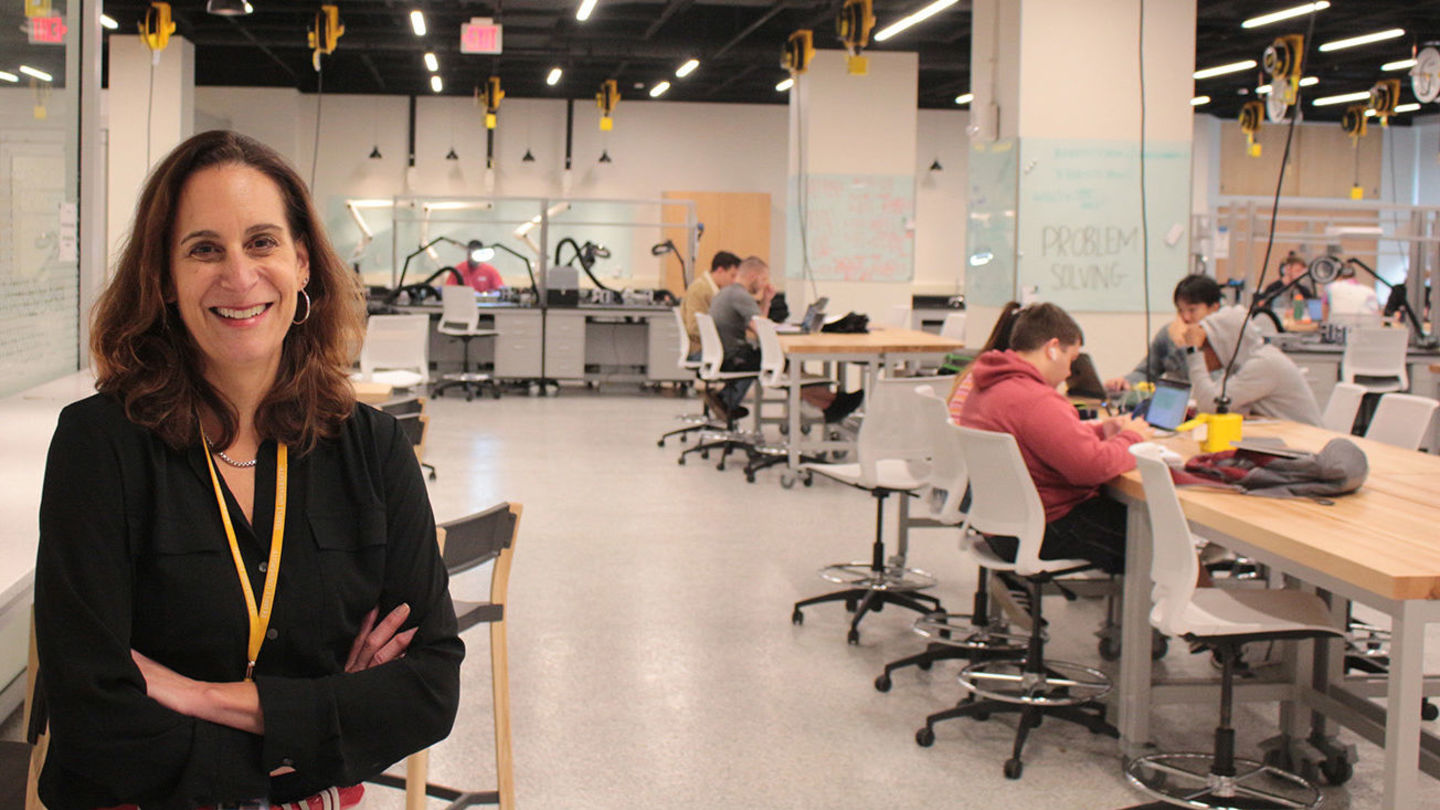
How do you find space for 1.5 million books alongside sprawling event and study areas, a makerspace, scholar studio, special collections and a first-floor cafe? Enter the Temple University ASRS, warmly referred to as BookBot, located in the Charles Library.
The project took the bulk of the library's collection and compressed it into a high-density robotic storage system. When an item is requested, a message is sent to the BookBot with the request. The item is retrieved from its corresponding bin, and delivered to a processing station for pickup.
Along with becoming part of the transformational new library, the BookBot is also an example of the types of solutions crafted by industrial and systems engineers: with a new space came the need for re-imagining how that space was used, including book storage and retrieval.
In a few short years, Temple will graduate its first class of industrial and systems engineering majors who will look to craft similar solutions. As the director of the only program of its kind in the Philadelphia region, Prof. Julie Drzymalski is eager to see students shape that future.
"The nice thing about industrial and systems engineers is that they can be hired in virtually any application. They look at integrating the materials, the information, the people," she said. "For example, you could see them working in hospitals trying to optimize the flow of an emergency room, or making sure doctors don't have patients on 19 different floors."
Prof. Drzymalski's own experience includes time spent in industry, with stints in construction management and designing aircraft arresting systems.
The ISE program is designed to blend business and engineering, building on coursework in engineering, math and sciences mixed with business over eight semesters. Students will learn the necessary analytical, computational and experimental practices for system integration in nine new courses covering operations management and research, production planning and control, quality assurance, simulation, logistics and supply chain management.
"There are courses that rely heavily on statistics, so scheduling, how to simulate a system, whether a physical system or a virtual one," Prof. Drzymalski said. "You'll also need to know the finances, so there is some accounting, finance and a little bit of managerial skills."
That curriculum will help power senior design projects, and in more than a project management role, Prof. Drzymalski said.
"When you're designing something, you have competing characteristics," she said. "Take a solar-powered vehicle, as an example. You want it to have optimal efficiency in terms of battery efficiency, but then you want it to be as spacious as possible and also cost effective. That is just one example, but an ISE can walk into virtually any industry and find a place."
A new student professional organization, too
This semester also saw the debut of the Temple chapter of Institute of Industrial and Systems Engineers. Visit @iisetemple on Instagram or email templeuniversityiise@gmail.com for more information.
To learn more about the ISE program, visit: https://www.temple.edu/academics/degree-programs/industrial-and-systems-engineering-major-en-ise-bsis.

